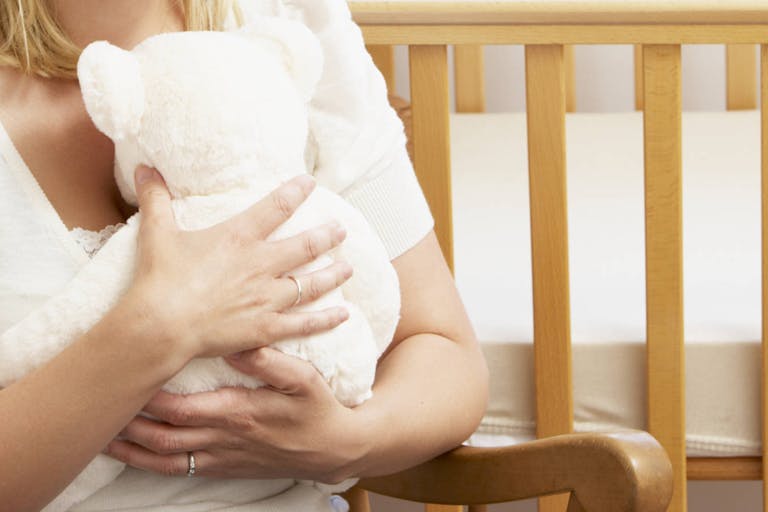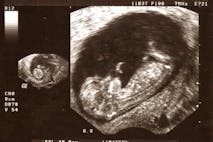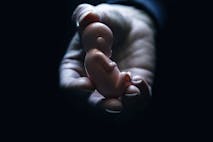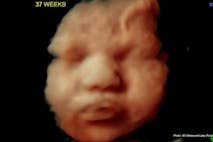
EU Parliament votes in favor of abortion travel fund
Bridget Sielicki
·
A family's two tragic abortions expose the need for holistic, life-affirming support
One family experienced two tragic diagnoses of anencephaly, and both times, they chose to abort their preborn daughters — but did the medical community truly provide the holistic support this family needed?
At 22 weeks gestation, Ellie Grace's parents drove from Texas to New Mexico for an abortion following her diagnosis of anencephaly. Her sister, Lily Grace, was 14 weeks when their parents returned to New Mexico for another abortion after Lily received the same diagnosis. The way the story is being presented in the media portrays the intentional killing of these children as the best decisions that could have been made, despite the depression that followed.
But in its effort to portray the intentional killing of terminally ill children as morally neutral or even morally acceptable, the pro-abortion media overlooks many facts and does a disservice to readers.
Hollie and Cody Cunningham learned their daughter Ellie had anencephaly, and they sought an abortion at 22 weeks. They later learned their second daughter, Lily, also had anencephaly and they underwent a second abortion at 14 weeks.
A doctor told them that Hollie's life was at risk and that their daughters were going to die.
The couple chose to travel from Texas to New Mexico for abortions; Hollie was left battling depression.
Hollie now speaks out in favor of the intentional killing of preborn children through abortion, even late into pregnancy.
The media coverage of this story appears to shame women who have chosen to carry to term in the face of a prenatal diagnosis, claiming abortion is the compassionate choice.
Doctors seem to have failed to provide this family with resources about carrying their daughters to term.
Hollie and Cody Cunningham were parents to two sons, whom the media made sure to label as "healthy" — the apparent litmus test for whether or not a child deserves to live. After a miscarriage, the Cunninghams were happy to be pregnant again in October 2022.
In an article for Courier Texas, Hollie explained that at 20 weeks pregnant, an anatomy scan showed that baby Ellie had anencephaly, a condition in which the skull does not completely form. In most cases, a baby with anencephaly does not survive after birth, although there are exceptions in which babies have survived.
The doctor told them, "With the state laws in Texas, I can't tell you what you can and cannot do."
If this account is accurate, then this was a pathetic answer from a trained specialist.
There are numerous resources for parents faced with such a diagnosis, and a maternal-fetal medicine specialist (MFM) — whose job often involves sharing such devastating news with parents — should be fully aware of these resources.
The couple went to see Hollie's OB/GYN, who said, "As long as your baby has a beating heart, there is nothing I can do for you in Texas. She will keep growing, but if you carry her to term, there will be risks to your health and life'" (emphasis added).
The doctor told Hollie she would be at risk for "severe hemorrhaging that could require a hysterectomy" and that the baby could be breech, and that she would need a C-section.
But there are important things to note:
According to a 1990 study published in The New England Journal of Medicine, "Pregnancy with a fetus with anencephaly carries an increased risk for the mother and the fetus," including "postpartum hemorrhage" due to the increased risk of polyhydramnios (excess amniotic fluid). One study found that the risk of hemorrhage increased from 5.1% in healthy pregnancies to 8% in pregnancies with children with anencephaly.
In addition, any pregnancy carries the risk of a possible need for a C-section. Such risks are not exclusive to pregnancies of children with anencephaly. However, there are mothers who have given birth without C-sections to their babies with anencephaly.
Hollie's doctor also seems to have failed to share resources to help the family with information about perinatal hospice. Instead, she made Hollie believe that not aborting Ellie would put her own life at risk.
Yet, Texas law allows for abortions to be carried out when there is a threat to the mother's health even when the threat of death is not imminent. If Hollie's life had been on the line, abortion would have been legal in Texas.
But Hollie's husband Cody, who had witnessed death firsthand in combat, was scared. Hollie wrote:
He told me that if I was forced to continue this pregnancy and then to watch our baby turn blue and die in our arms after she was born, it would have killed him. It would have been worse than war.
Hollie, too, was scared — and now her husband was also urging abortion as the "easier" way to go. But in truth, there is never an "easy" way to lose a child. It is devastating.
Hollie added, "Who would want their baby to be hooked up to morphine and to suffer and die, gasping for air?... It's not OK." Whether she meant to or not, in this remark, she shamed women who choose to carry to term after a life-limiting diagnosis, possibly to justify her own choice to abort.
The couple traveled to New Mexico for an induction abortion at 22 weeks, which cost more than $7,000 and involved lethally injecting Ellie with a feticide to cause cardiac arrest.
When they returned to the hotel, Ellie was still kicking... and Cody felt her kick for the first time — then she died.

A few months later, the couple decided to attempt to "have a healthy baby" using IVF "to test the embryos... for genetic defects." The goal was to weed out any children who failed to pass the good health litmus test. They successfully created three "normal" embryos. But after one — a baby girl they named Lily — was transferred in October 2023, she was diagnosed with anencephaly at 14 weeks.
Doctors said they had never seen a second anencephaly diagnosis in the same family, but according to the Medical Task Force on Anencephaly, cases of anencephaly have a recurrence risk of between two percent and five percent.
Were Hollie's doctors unaware that anencephaly can be caused by low folic acid? Did they check Hollie's folic acid or advise her to increase her intake of the vitamin?
Article continues below
Dear Reader,
In 2026, Live Action is heading straight where the battle is fiercest: college campuses.
We have a bold initiative to establish 100 Live Action campus chapters within the next year, and your partnership will make it a success!
Your support today will help train and equip young leaders, bring Live Action’s educational content into academic environments, host on-campus events and debates, and empower students to challenge the pro-abortion status quo with truth and compassion.
Invest in pro-life grassroots outreach and cultural formation with your DOUBLED year-end gift!
Facing the same diagnosis, the couple returned to New Mexico for a second abortion.
Hollie is currently pregnant and it appears the pregnancy was natural, though she did not give the status of the other two babies conceived via IVF.
She is also 'fighting' for expanded abortion access alongside other women who have aborted their babies following a prenatal diagnosis.
Like many women who have abortions because of their baby's diagnosis, Hollie "never thought the word abortion would ever be part of my journey." She assured readers, "I always wanted lots and lots of kids. I love kids. I taught kindergarten for years."
But this statement seems an attempt at justification and reassurance that abortion isn't just for people who don't want kids. And of course, this is the media's message: lethal injection and dismemberment are also for use on 'wanted' babies whose parents are afraid to hold them as they die.
No loving parents ever wish to watch their child die, yet when Hollie asked, "Who would want their baby to be hooked up to morphine and to suffer and die, gasping for air?" this remark aimed straight at the hearts of parents whose greatest fear is the suffering or loss of their children.
Statements like this one portray a mother who chooses to kill her child in the womb as more compassionate than the one who chooses to carry that child to term as a member of their family. But there is fear behind those statements; this is understandable, as any parent would fear such an immense pain.
They believed that witnessing the death of Ellie would be "worse than war," so instead, they chose to cause it — but not to witness it.
Despite this, Hollie was not spared pain. She explained that when the abortionist "inserted the medicine that was going to stop my baby’s heart... I lost it. I felt guilty..." She also admitted, "I went into a depression after losing Ellie Grace. I didn’t want to see anybody or talk about it. I would sleep and cry."
She shared less about Lily's death, saying only that she "was grieving."
Research shows that mothers who choose abortion after an anencephaly diagnosis suffer significantly more despair and depression than mothers who carry to term. Studies show it's beneficial to the mother to carry her child to term after a prenatal diagnosis.
Additional research on infant loss found that “[r]isk of complicated grief was found to be especially high after termination of a pregnancy due to fetal abnormality.”
Another study determined that "the women ultimately felt as if they were betraying themselves and their babies" when they had abortions after prenatal diagnoses.
In addition, a separate study found that, of 405 parents who carried to their babies to term following the prenatal diagnosis of a life-limiting condition, 97.5% reported an absence of regret in carrying to term.
Additional research shared by the organization Be Not Afraid confirms this, finding that parents who carry to term reported feeling more emotionally prepared for their child’s birth and possible death, and they felt “a sense of gratitude and peace surrounding the brief life of their child.”
Doctors and hospitals must inform parents of help available to them from perinatal hospice groups (see this listing by state) and resources for grief support.
Unfortunately, the article about this family's tragedies also spread one of the biggest misconceptions about pro-life laws — that women are dying because of them. In fact, no woman has died directly because of a pro-life law, and blaming the law for the failures of hospitals and medical professionals to know the laws of their own state regarding the medical profession they practice every day is misguided. In addition, despite sharing misinformation about maternal deaths, the article also offered no information on abortion risks, which also include hemorrhage. Risks to women seeking abortions increase significantly as gestational age progresses.
Every single pro-life law in the U.S. includes an exception that allows for abortion when the mother's life is at risk. If any mother's life is threatened by continuing a pregnancy, any willing OB in Texas would legally be allowed to carry out an abortion.
Carrying a baby to term after a diagnosis is a morally acceptable option; in fact, it's the only morally acceptable option. But multiple medical professionals failed to holistically help this family, robbing them of the opportunity to properly heal, hold, and mourn their daughters.
Live Action News is pro-life news and commentary from a pro-life perspective.
Contact editor@liveaction.org for questions, corrections, or if you are seeking permission to reprint any Live Action News content.
Guest Articles: To submit a guest article to Live Action News, email editor@liveaction.org with an attached Word document of 800-1000 words. Please also attach any photos relevant to your submission if applicable. If your submission is accepted for publication, you will be notified within three weeks. Guest articles are not compensated (see our Open License Agreement). Thank you for your interest in Live Action News!

Bridget Sielicki
·
Fact Checks
Nancy Flanders
·
Fact Checks
Nancy Flanders
·
Fact Checks
Cassy Cooke
·
Fact Checks
Madison Evans
·
Fact Checks
Nancy Flanders
·
Human Interest
Nancy Flanders
·
Analysis
Nancy Flanders
·
Politics
Nancy Flanders
·
Activism
Nancy Flanders
·
Issues
Nancy Flanders
·